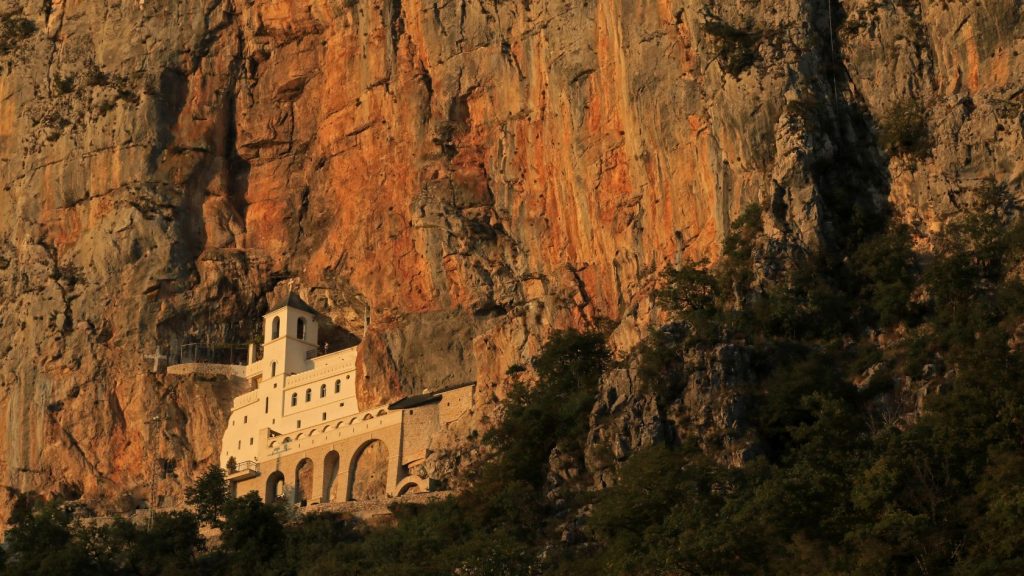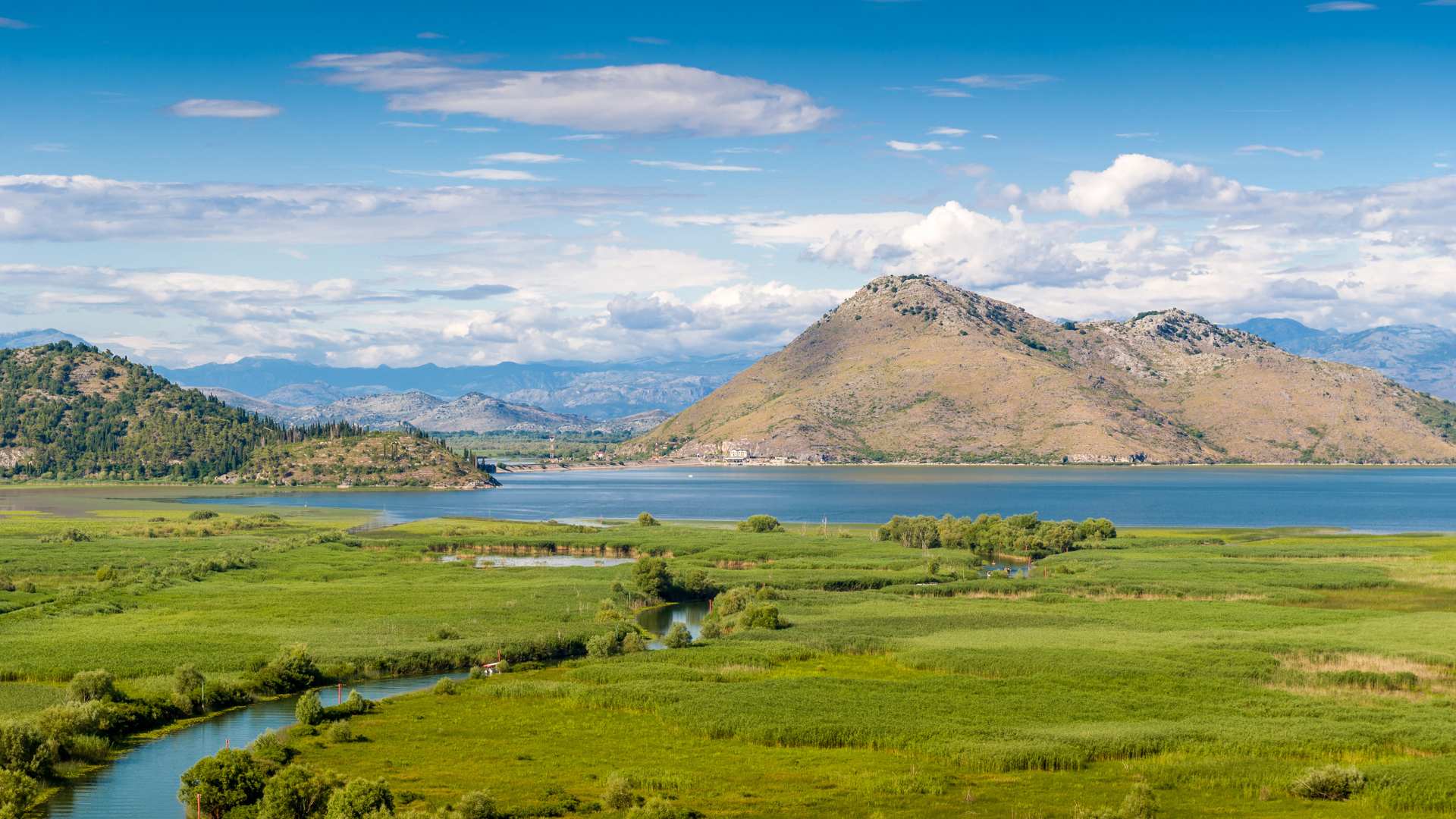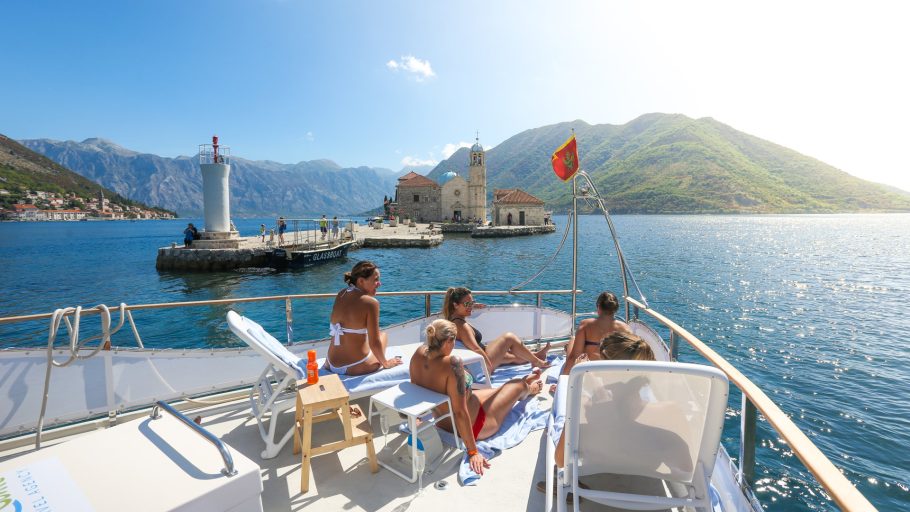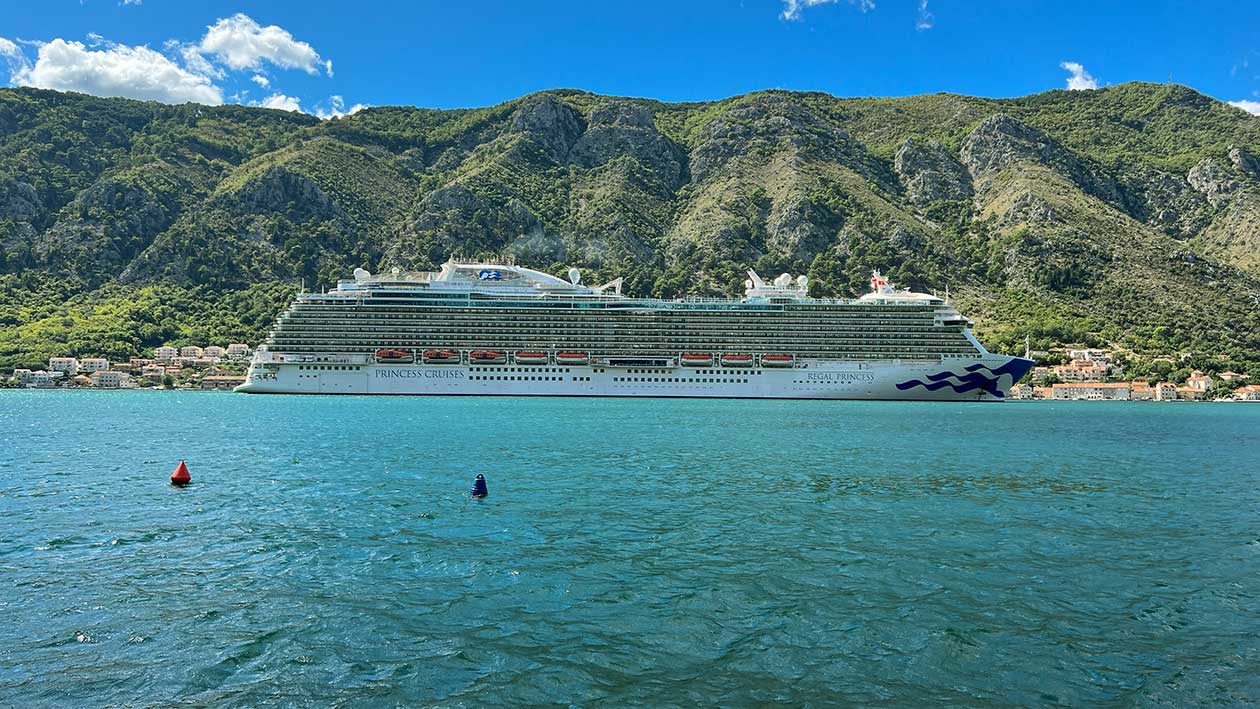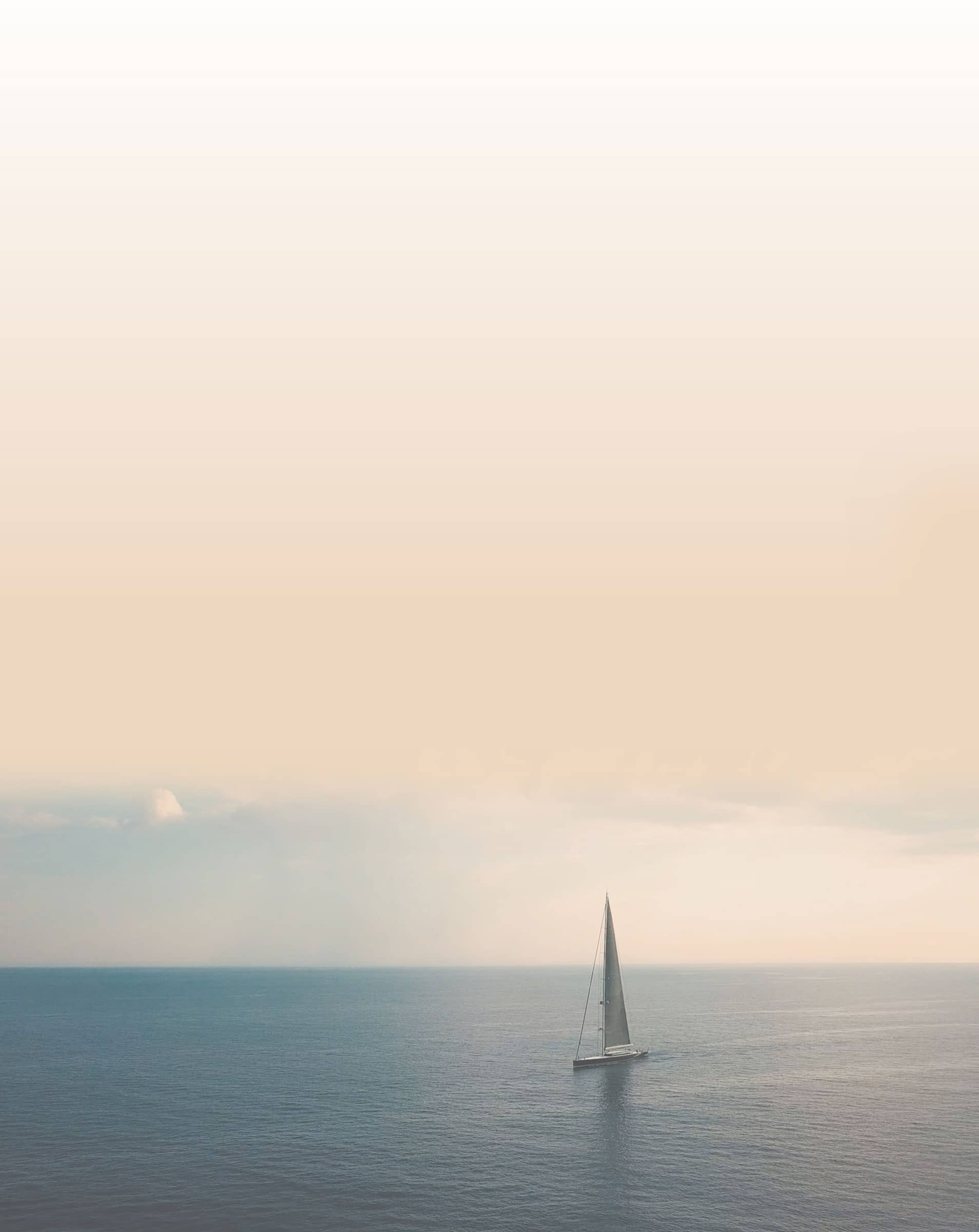Ostrog Monastery
TL;DR: Ostrog Monastery is perched high on Mount Ostroška Greda’s cliffs, symbolizing faith, resilience, and spiritual devotion. Ostrog is one of the most revered pilgrimage sites in the Balkans. This monastery offers a profound spiritual experience and overlooks the picturesque Zeta River and the expansive Bjelopavlići Plain below. The unique combination of natural beauty and sacred history makes Ostrog a must-visit destination for travelers in Montenegro.
The Origins of Ostrog Monastery
Ostrog Monastery was founded in the 17th century by Vasilije, the Metropolitan Bishop of Herzegovina, who later became St. Basil of Ostrog. Fleeing the advancing Ottoman forces, St. Basil sought refuge in the remote cliffs of Mount Ostroška Greda. He chose this location because it was inaccessible. It became a haven for Christian monks and believers when the Ottoman Empire spread through the Balkans.
Vasilije personally oversaw the construction of the monastery. The monastery was initially a tiny cave church dedicated to the Presentation of the Mother of God. Later, more buildings were added, including the cave church of the Holy Cross, transforming Ostrog into a significant spiritual center.
After he died in 1671, his relics were enshrined in the Upper Monastery, where they remain. These relics are believed to have miraculous healing powers, attracting thousands of pilgrims worldwide, regardless of their religious beliefs. Ostrog Monastery is an Orthodox sanctuary where people of all faiths seek solace, healing, and inspiration.
Ostrog Monastery: The Architecture and Layout
The monastery is divided into two main sections: the Lower Monastery and the Upper Monastery. The Lower Monastery, situated at the foot of the mountain, houses the Church of the Holy Trinity. Lower Monastery serves as the entry point for visitors and pilgrims. It’s here that most people begin their spiritual journey to the Upper Monastery. Many people of faith also come to get baptized here.
The Upper Monastery is Ostrog’s true heart. Built directly into the vertical rock face, it seems to defy gravity. It feels like it’s clinging improbably to the cliff by a miracle. The Upper Monastery consists of two cave churches. One is the Church of the Presentation of the Mother of God. The other is the Church of the Holy Cross. These churches are adorned with frescoes and offer a glimpse into the deep spiritual history of the region.
The ascent from the Lower to the Upper Monastery is steep and challenging, but the reward is spiritual and visual. As you climb, stunning views unfold before you, providing a moment of reflection and awe.
Ostrog Monastery Miracles and Mysteries
Ostrog Monastery is known for countless miracles attributed to it over the centuries. Pilgrims who visit Ostrog often share stories of miraculous healings, particularly after praying at the relics of St. Basil. His body remains incorrupt, a phenomenon that defies scientific explanation. Many who come seeking solace leave with a renewed sense of hope. All attribute their experiences to this sacred place’s mysterious and divine power. These stories, passed down through generations, only deepen the spiritual allure of Ostrog. They are making it a site of both faith and wonder.
The Bjelopavlići Plain and Zeta River: A Landscape of Serenity
While the monastery is the main draw, the surrounding landscapes add natural beauty to the experience. The Bjelopavlići Plain is a vast, fertile area that has been Montenegro’s cradle of life and agriculture for centuries. With its rich soil and temperate climate, this plain stretches beneath the monastery, contrasting the rugged cliffs above.
The Zeta River flows gently through the plain. Its clear, calm waters provide a refreshing counterpoint to the arid mountains. The river’s banks are dotted with small villages and farms, showcasing the traditional Montenegrin way of life.
From the heights of Ostrog Monastery, the plain and the river appear as a tranquil oasis. A peaceful landscape that has remained unchanged for generations. Combining the sacred and the natural, this view encapsulates the essence of Montenegro. A land where history, spirituality, and nature coexist in harmony.
A Spiritual and Natural Pilgrimage
This is more than just a religious site. It’s a place where the soul can find peace amidst the beauty of nature. Whether you seek spiritual renewal or historical insight, the experience will stay long after you descend from the mountain.
As you stand in the Upper Monastery, it’s easy to understand why St. Basil chose this spot for his sanctuary. It invites reflection, where the past and present meet and where the beauty of creation is on full display.
The Feast of St. Basil of Ostrog: A Day of Reverence and Celebration
Since 1678, when the remains of St. Basil were unearthed, the faithful have observed the anniversary of his passing on April 29th according to the old calendar or May 12th under the new calendar. This day is deeply revered as a holy day in Montenegro. The monastery of Ostrog becomes a focal point for pilgrims, who come to celebrate and participate in religious services.
Ostrog Half-marathon!
Here’s a perfect chance to test your endurance and faith! Starting from the temple church of St. Basil in Nikšić, this annual event (taking place around mid-April) is about to turn eight years old. Join fellow runners on the 13th of April and enjoy one of the most challenging half-marathon races.
Frequently Asked Questions
How to get to Ostrog from Kotor?
Reaching Ostrog Monastery can be tricky if you don’t have a car, as no public buses go there. You can always rent a car, taxi (probably expensive), or tour. In any case, here’s the location.
What is the Best Time to Visit Ostrog Monastery?
Any time of the year is perfect for a visit. Remember that the weekends get rather busy, with pilgrims all around, so visiting during the work week is best. In any case, we wish you a fantastic visit.
Is Ostrog Monastery worth visiting?
Yes, Ostrog Monastery is worth visiting. It is a place of deep spiritual significance and an architectural marvel perched on the cliffs of Mount Ostroška Greda. The combination of breathtaking natural scenery, rich history, and the opportunity for reflection makes it a must-see destination in Montenegro.
Is Ostrog Monastery free?
Yes, visiting Ostrog Monastery is free of charge. There is no entrance fee required to explore the monastery and its surroundings.
How much does it cost to go to Ostrog Monastery?
While entrance to the monastery is free, costs can vary depending on how you reach the site. If you’re driving yourself, you must consider fuel and parking fees. Taxis or organized tours can also add to the expense. However, there is no cost to access the monastery itself.
What to wear to Ostrog Monastery?
Visitors to Ostrog Monastery should dress modestly, as it is a religious site. This means covering your shoulders and knees. Comfortable shoes are also advisable, especially if you plan to walk the steep path from the Lower to the Upper Monastery.
Can visitors stay at an Orthodox monastery?
Yes, visitors can stay at Ostrog Monastery. Simple accommodations are available for pilgrims, usually at no cost, though donations are appreciated. The accommodations are basic and reflect the monastic lifestyle, and they are typically provided for those who wish to stay overnight for spiritual reasons.
How much time does it take to visit Ostrog Monastery?
The time required to visit Ostrog Monastery can vary. Visiting the Upper Monastery can take about 1 to 2 hours, including the ascent from the Lower Monastery. However, if you plan to explore the entire site, reflect, and perhaps attend a service, you might want to allocate a half day or more.
Can you sleep at Ostrog Monastery?
Yes, you can sleep at Ostrog Monastery. The monastery provides simple accommodations for pilgrims who wish to stay overnight. This experience allows for a deeper connection with the spiritual environment of the monastery.
Why is Ostrog Monastery important?
Ostrog Monastery is essential both spiritually and culturally. It is one of the most revered Orthodox Christian sites in the Balkans, known for its miraculous relics of St. Basil of Ostrog, which is believed to have healing powers. The monastery’s dramatic location and role as a sanctuary during Ottoman rule add to its significance.
How old is Ostrog Monastery?
St. Basil of Ostrog founded Ostrog Monastery in the 17th century. Thus, the monastery is over 350 years old.
What is the altitude of Ostrog Monastery?
The Upper Monastery of Ostrog is located at an altitude of approximately 900 meters (around 2,950 feet) above sea level.
Can you drive to Ostrog Monastery?
Yes, you can drive to Ostrog Monastery. There is a road that leads up to the Lower Monastery, and from there, visitors often walk up to the Upper Monastery. The road can be narrow and winding, so caution is advised when driving. Some visitors park at the Lower Monastery and walk the rest of the way to the Upper Monastery.

